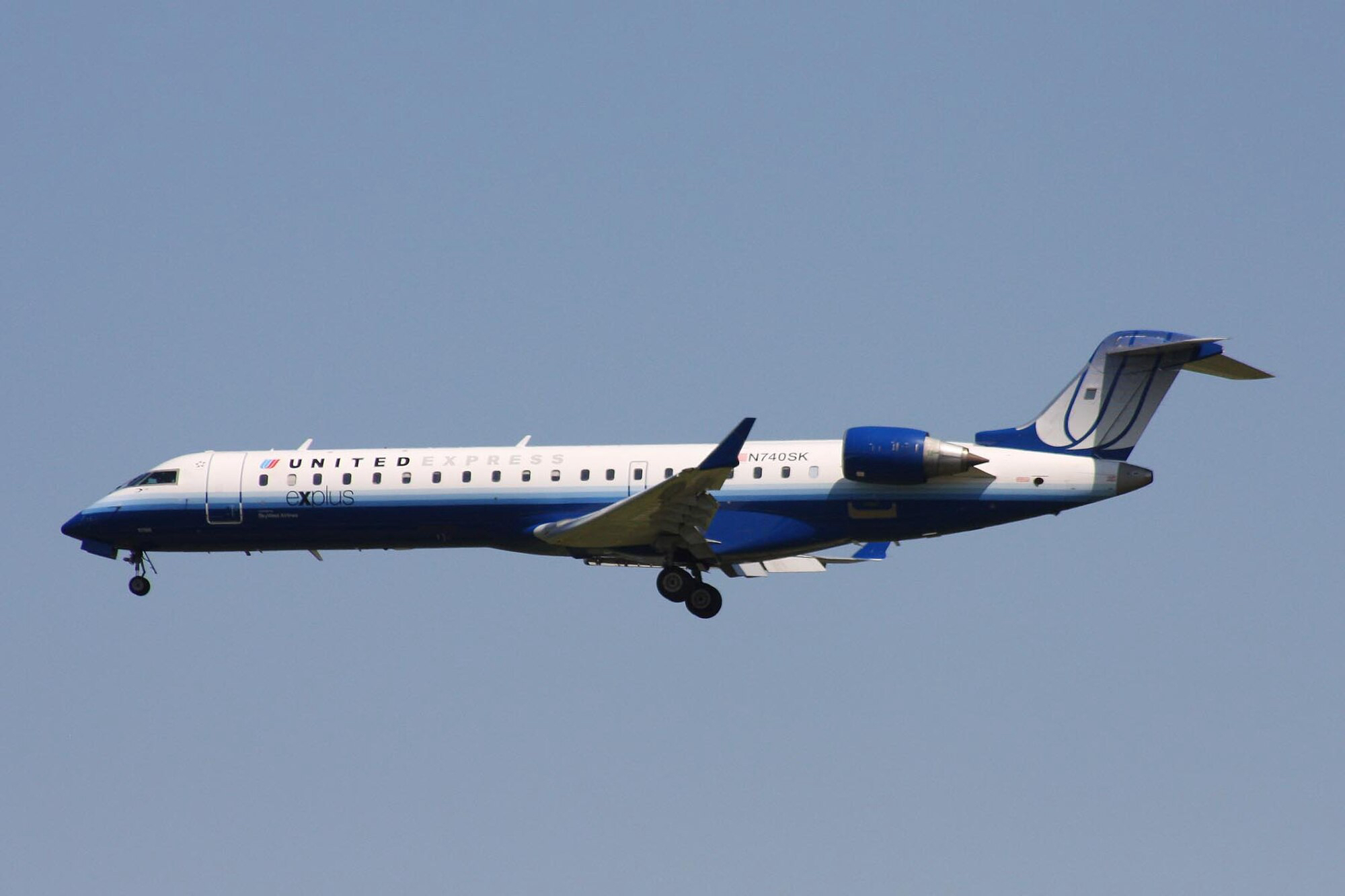Flight AA-6269 | Registration: N741EV
Date: 11 April 2025 | Location: Dallas Fort Worth International Airport (KDFW), Texas, USA
Flight Details
Aircraft Type: Bombardier CRJ-700 (CL-600-2C10) Engines: 2 × General Electric CF34-8C5B1 Operator: SkyWest Airlines (operating for American Airlines) Registration: N741EV Flight Number: AA-6269 Callsign: SKW6269 Route: Dallas Fort Worth (DFW) to San Angelo Regional Airport (SJT), Texas Date of Incident: 11 April 2025 Total Occupants: Estimated 70 (passengers and crew) Weather Conditions: VMC (Visual Meteorological Conditions) reported at time of departure
Introduction
On 11 April 2025, a SkyWest Airlines Bombardier CRJ-700, operating as American Eagle flight AA-6269, experienced a cabin pressurisation failure while climbing through FL200 shortly after departing Dallas Fort Worth International Airport. The crew halted the climb and elected to return to DFW, executing a precautionary descent and safe landing on runway 36L approximately 30 minutes after departure.
There were no injuries reported, and the event was managed without incident on the flight deck or in the cabin. A replacement aircraft was dispatched the following morning, resulting in an overall delay of 11 hours for affected passengers.
Sequence of Events
Flight AA-6269 departed Dallas Fort Worth on schedule, with a standard climb profile toward cruise altitude. At approximately FL200, the flight crew observed:
Abnormal cabin altitude readings Potential pressurisation system alerts on the EICAS (Engine Indicating and Crew Alerting System) Cabin climb rate exceeding normal limits
In response, the crew:
Stopped the climb and levelled off Advised ATC of a pressurisation problem Initiated a return to Dallas Fort Worth, descending to a safe cabin pressure altitude Landed on runway 36L without further complication
No oxygen masks were deployed, and no emergency was declared, indicating the cabin altitude did not exceed 14,000 feet.
Crew & Communication
The flight crew managed the event in accordance with Bombardier’s QRH guidance for “CABIN ALT” and pressurisation failure:
Bleed air and pressurisation systems reviewed and isolated as needed Packs and outflow valves reconfigured to attempt re-pressurisation ATC advised of return plans with no Mayday or Pan declared
Cabin crew were briefed and monitored the cabin environment. Passengers were kept informed, and no abnormal symptoms were reported during descent.
Aircraft Systems & Technical Analysis
The Bombardier CRJ-700 maintains cabin pressure via:
Dual engine bleed air systems Air cycle machines (ACM) for temperature and pressure regulation An automatic and manual pressurisation control system controlling the outflow valve
Failure modes consistent with this event include:
Outflow valve stuck open or failed closed Leak in the fuselage or pressure ducting Pack controller malfunction Faulty pressure sensors or controller inputs
The pressurisation control system logic is managed by the CPCS (Cabin Pressure Control System). If pressurisation was lost during climb, CPCS would display corresponding EICAS messages such as:
CABIN ALT BLEED OFF PACK FAULT
Post-flight diagnostics would include:
Download of maintenance data via the CFDS (Central Fault Display System) Outflow valve actuation testing Bleed air system leak checks Component swap if system elements failed or fault codes confirmed anomalies
As of 13 April, the aircraft remains grounded in Dallas, indicating ongoing inspection or component replacement.
Passenger Experience & Cabin Conditions
Passengers reported no dramatic changes during the incident. There were no signs of mist, sudden ear pressure, or oxygen mask deployment—suggesting the cabin altitude remained within acceptable limits.
In-cabin communication was clear, and the descent was smooth. The aircraft taxied normally to the stand after landing, with passengers deplaned through the airbridge.
Emergency Response & Aftermath
No emergency services were dispatched as the crew did not declare an emergency. Upon return to stand:
Maintenance personnel began diagnostics on the cabin pressurisation and bleed air systems The flight was officially cancelled, and passengers were rebooked A replacement CRJ-700 (registration N760SK) was dispatched the next morning to complete the flight to San Angelo
There are no reports of passenger injury, and no emergency evacuation was deemed necessary.
Investigation Status
This incident is being treated as a technical occurrence, not a serious incident or accident.
SkyWest Airlines’ maintenance division and Bombardier technical support will review:
The CPCS performance data Valve and sensor functionality Flight crew reports and debrief logs Historical maintenance records on pressurisation-related discrepancies
As of now, the aircraft remains out of service more than 58 hours after landing, likely awaiting component delivery or system retesting.
Root Cause & Contributing Factors
Probable Cause:
Failure of the automatic pressurisation control system or associated bleed air component leading to inability to maintain cabin altitude during climb.
Contributing Factors:
Potential outflow valve malfunction Inoperative or degraded engine bleed air source Possible electrical fault in the CPCS Environmental or maintenance-induced sensor error
Safety Recommendations & Industry Impact
Though minor in scale, this event reinforces:
The importance of proactive cabin monitoring during climb Routine inspection of outflow valves and bleed air systems Regular system calibration checks on CRJ family aircraft Continued emphasis on QRH drills and EICAS fault management
Pressurisation faults, even when resolved safely, can cause significant disruption and warrant rapid diagnostic capability on the ground to avoid prolonged downtime.
Conclusion
SkyWest Airlines flight AA-6269 returned safely to Dallas Fort Worth following a pressurisation fault during climb. The flight crew executed appropriate return procedures, and all passengers were accommodated. Investigation and maintenance efforts are ongoing, with the aircraft still grounded pending repair.
Disclaimer
This article is based on publicly available information and reports at the time of writing. While every effort has been made to ensure accuracy, we cannot guarantee the completeness of the information provided.
If you are the rightful owner of any referenced content or images and wish them to be removed, please contact takedown@cockpitking.com.
